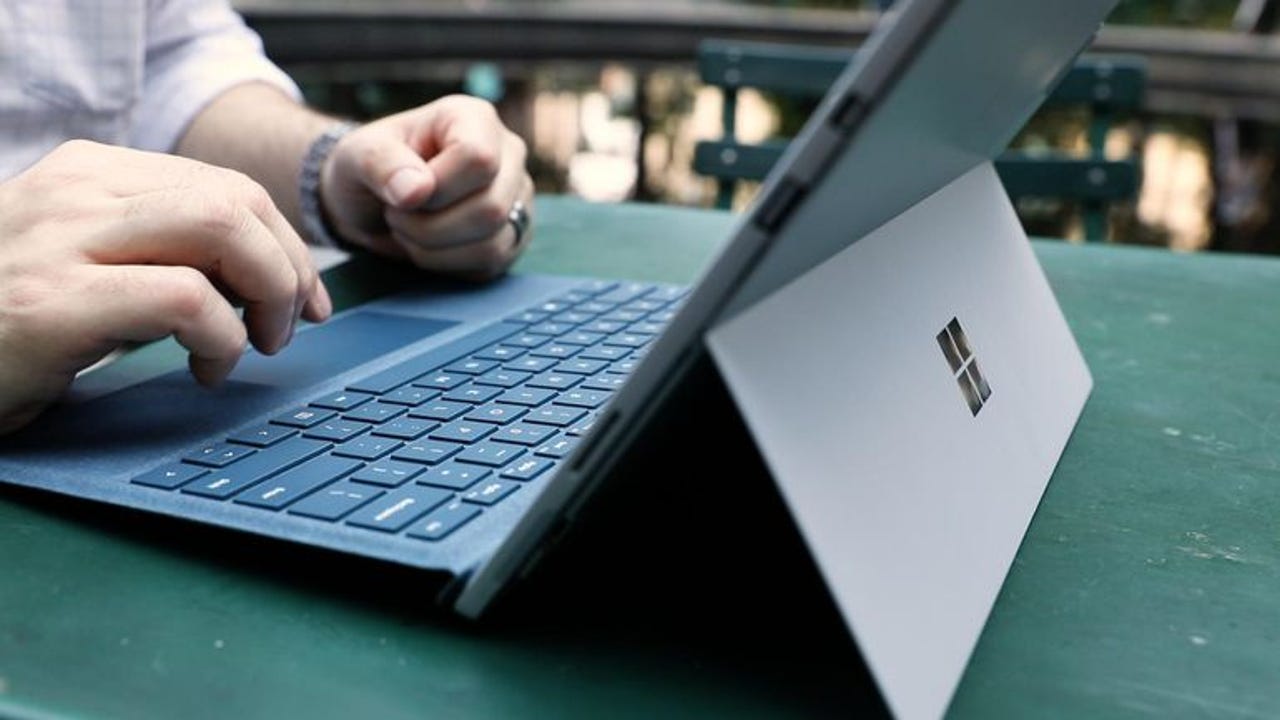With latest Surface device, Microsoft opts for a business-first approach

A major milestone in Microsoft history passed almost unnoticed this week.
In October 2012, Microsoft launched its first-ever line of PCs and tablets with the Surface RT. That ARM-powered device was aimed squarely at consumers. Its gray-flannel-clad cousin, the Surface Pro, wouldn't arrive until several months later.
Fast-forward five years and that emphasis has been completely reversed.
More from Ed Bott
The latest member of the Surface family, the Surface Pro with LTE Advanced, was announced today at Microsoft's Future Decoded conference in London.
That device will be available for sale in December, but don't expect to find it in the usual retail channels. The official news release pointedly notes that the LTE-powered device "will begin shipping to business customers" first. In a press event after the keynote today, Surface boss Panos Panay confirmed that retail customers will have to wait until well into 2018 before they're able to purchase the new model.
Part of the justification for that decision is pure economics. The Cat 9 LTE Advanced modem adds $150 to the Surface Pro's already hefty price tag, taking the i5-based model, with 8GB of RAM and a 256GB SSD, to an ultra-premium $1,449. And that doesn't include the Type Cover ($160) or the pen ($100).
Most consumers and students, of course, would blanch at those price tags, but businesses who want their workers to be constantly connected with a full-strength PC won't feel so constrained.
This isn't the first Surface device with a mobile data option. That honor went to the Surface 3, which released a 4G model in 2015. That device followed the same channel strategy, selling to business customers first, but the Intel Atom chip inside was too wimpy to handle serious workloads and it sank in the marketplace.
This time around, says Panay, the situation is different, thanks to the evolution of the hardware, the software, and the silicon. "The performance of this product with the Core i5 and the Core i7 is incredible," he said.
"Even a year ago, you would have had to compromise somewhere to get that level of performance, and that used to be battery life," he continued. But that's all changed, thanks to improvements in the networking stack in the just-released Windows 10 Fall Creators Update, coupled with the latest generation of Intel CPUs and what Panay calls the "incredible" Cat 9 modem technology.
"We've been very patient to get it out. We wanted the latest and greatest of Windows and Office, which have both been optimized for the LTE product."
This expanded focus on the commercial channel is a part of the Surface business that Microsoft doesn't talk about much. In its quarterly earnings reports, it doesn't break out sales between commercial and retail channels.
But the Surface lineup's growth has been driven by the sort of products that corporate procurement departments love, and I am hearing increasingly from people who work in large businesses and government agencies that are being issued Surface devices, or having those devices available as one of a small handful of approved devices.
Those corporate and government customers have long been Microsoft's best constituency, so it's no surprise that the company is focusing its sales efforts on commercial channels. Ironically, Apple has been using the same playbook for the past few years, partnering with IBM to put Macs on enterprise desktops.
Meanwhile, other Surface devices may soon be headed for a similar transition. Last month, Microsoft outlined plans to expand its Windows 10 S product line, offering something called "Windows 10 Enterprise in S mode."
The flagship product running Windows 10 S is the Surface Laptop, which is too pricey to be a credible option for most education customers. See Windows 10 S is the future (but not the present) of the desktop PC for details. But that laptop makes perfect sense for volume purchases in corporate settings, especially for "firstline workers" who don't need the more expensive detachable Surface devices.
Previous and related coverage
With Surface Book 2, Microsoft shows off its vision of the PC's future
Microsoft claims its new Surface Book 2 devices pack more computational power than any competitor. Can these super-premium devices convince other PC makers to raise the bar as well?
Making sense of Microsoft's Surface lineup
With its new Surface Laptop and a major internal makeover for the Surface Pro, Microsoft's line of PCs now includes four models. Here's a closer look at where each one fits in the competitive landscape.
Surface Pro (2017): Small refinements to a familiar design
The tl;dr: If you're a fan of the Surface Pro design, this is a subtle but significant upgrade, one that's well worth considering. If, on the other hand, you're in the market for a conventional clamshell laptop, you now have other options in the Surface family. As a result, the new Surface Pro no longer has to live up to its predecessors' tagline, "the tablet that can replace your laptop."
